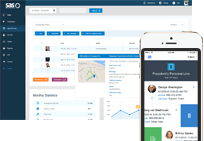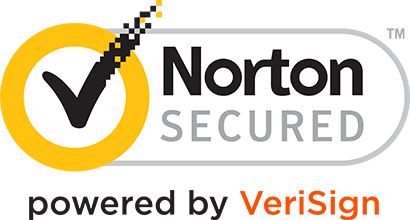- Log In
- Support
- Company
- Contact Us
- Live answers @ 1-888-532-4794
Small Business Pricing to Win, Part 3: Arriving at the right price

This is part 3 of a 4-part series on the logic behind pricing your product or service to win in your respective marketplace. In Part 1, we looked at the various pricing strategies that are prevalent in the market, and in Part 2, we discussed the external and internal factors that determine price. In this part, we’ll focus on how you should arrive at the right price.
When it comes to pricing, there is no one-size-fits-all formula. In fact, within your own business, you may price the same product differently based on the time of day, the geography, or the particular sales channel being utilized. You may even price differently based on the weather – seasonal fruits are a typical example of this.
Many small businesses make the mistake of pricing too low in an attempt to attract sales volume, but this can lead to cash flow issues. On the flip side, if you set prices too high, then your potential customers may look elsewhere, especially if you are in a market where there is serious competition from big players. So what is the right price?
What is the Right Price?
The right price should ideally fall between the costs you have incurred and the way consumers value your product. The value you provide must outweigh your expenditures. Costs can be direct and indirect, ranging from the cost of creating and marketing your product, to overhead expenses, such as telephone charges, utilities costs, employee salaries, etc. And they will quickly add up. So, in order to command a premium price, your product alone isn’t enough. Provide value-added products or services, and learn to effectively communicate this value to your customer.
We’ve boiled the process down to 7 steps to help you determine the right price:
- Calculate the total cost of your product, including all direct and indirect expenses. To help, we’ve created an expenditures worksheet you can download here. This is your base price.
- Decide on the minimum profit margin that you want from your business, and don’t set minimum profit expectations too high! Add that to your base price to arrive at your minimum selling price.
- Now unless you are selling a completely innovative product/service, pricing is best determined by the marketplace. Look at how much the competition is charging for similar products/services. If your base price is higher than the competition’s market price, you’ll need to reexamine your costs, and do a cost cutting exercise.
- Let’s assume that the competition’s prices are much higher than your base price. The highest price that any competitor is charging can be your ceiling price. Also, identify which competitor is the market leader in the geographic area where you plan to sell your products and what they are charging. This will form your most viable price.
- If your minimum selling price is lower than the most viable price, then you can charge slightly lower than the most viable price and still garner market share. Of course, your product offering and communication of value to customers (marketing) will have to be stronger than the market leader. You will also need to differentiate your offering in some way that makes it difficult for the competition to replicate. For example, if you are selling homemade pizzas, why not use organic, locally-sourced ingredients, and highlight that to your prospective customers? This, along with the right price, may be difficult for large pizza chains to replicate.
- If your minimum selling price is higher than the most viable price, then you should consider pricing even higher than the ceiling price. This would require you to position your offering as the most premium service in the marketplace, and you will need to deliver on that promise. Small businesses may find this difficult to achieve, unless you are a niche player such as a wedding photographer or a wedding dress maker. Customers do not mind paying for exclusivity on special occasions. If you are in that market, then high quality products and customer care, along with the high prices to match, would make you a winner.
- Test and tweak. No matter what pricing approach you follow, not many entrepreneurs get it right on the first try. As a small business owner, try not to take on too many commitments in terms of raw materials or office space before you have arrived at the perfect mix of price and business strategy. You may need a few attempts to figure out your customers’ preferences and willingness to pay. Be open to experimenting with your pricing, especially in the early stages. Sam Walton tried multiple pricing models before he arrived at Walmart’s “Everyday low price” model.
If you’re struggling finding the perfect price, keep in mind that it is easier to lower prices than to raise them at a later stage. When in doubt, always price higher, and aim to offer more value than your price deserves. If higher prices aren’t working, it’s time to change your prices.
When Should You Change Your Prices?
Knowing when to raise or lower prices is just as important as pricing right in the first place.
Raising: You may raise prices when you offer additional benefits for customers, but remember that not every product feature will translate into an additional benefit. You could increase pricing when your own costs have increased, such as in high-inflation markets when raw material costs are climbing. Pricing can also be upped during peak demand or when your offering is unique. If you are going to raise prices, then give customers a heads up, and explain your rationale.
Lowering: Prices can be lowered if you are entering a new market to increase trials or if a new competitor is in the game and trying to take away your clients with lower prices. If it’s the latter, then a smarter strategy is to explain to clients why they are better off with you, even if they are paying a premium.
The final post in this series will focus on common pricing pitfalls that small businesses encounter and how you can avoid them.
Categories
- Advice (31)
- Answering Service 101 (18)
- Best Practices (10)
- Call Center Jobs (6)
- Call Center Software (20)
- Comparison (2)
- Customer Service (30)
- Funny (31)
- Holidays (19)
- Industry Hacks (19)
- Infographics (53)
- International (1)
- Medical (8)
- News (12)
- Phone Etiquette (2)
- Phones (14)
- Pricing (8)
- Quizzes (3)
- Receptionist (11)
- SAS Products (27)
- Scripting (4)
- Services (5)
- Small Business (25)
- Starting Up (7)
- Tips and Tricks (19)
- Uncategorized (1)
- Videos (19)
- Workplace (6)
Recently writen
- March 2024 Release Notes – New Add-On, Settings Revamp, and more!
- August 2023 Release Notes – Premium Add-On’s, New Scripting Block, and More!
- Release Notes – New Calls Dashboard, the Ability to Stop an Active Reach, and More!
- May 2023 Release Notes – New Scripting Workflow, Updated On-Call, and More!
Follow Us
How about a demo?
We'll show you how our web portal works and answer any questions you have about SAS.
Schedule a demo







